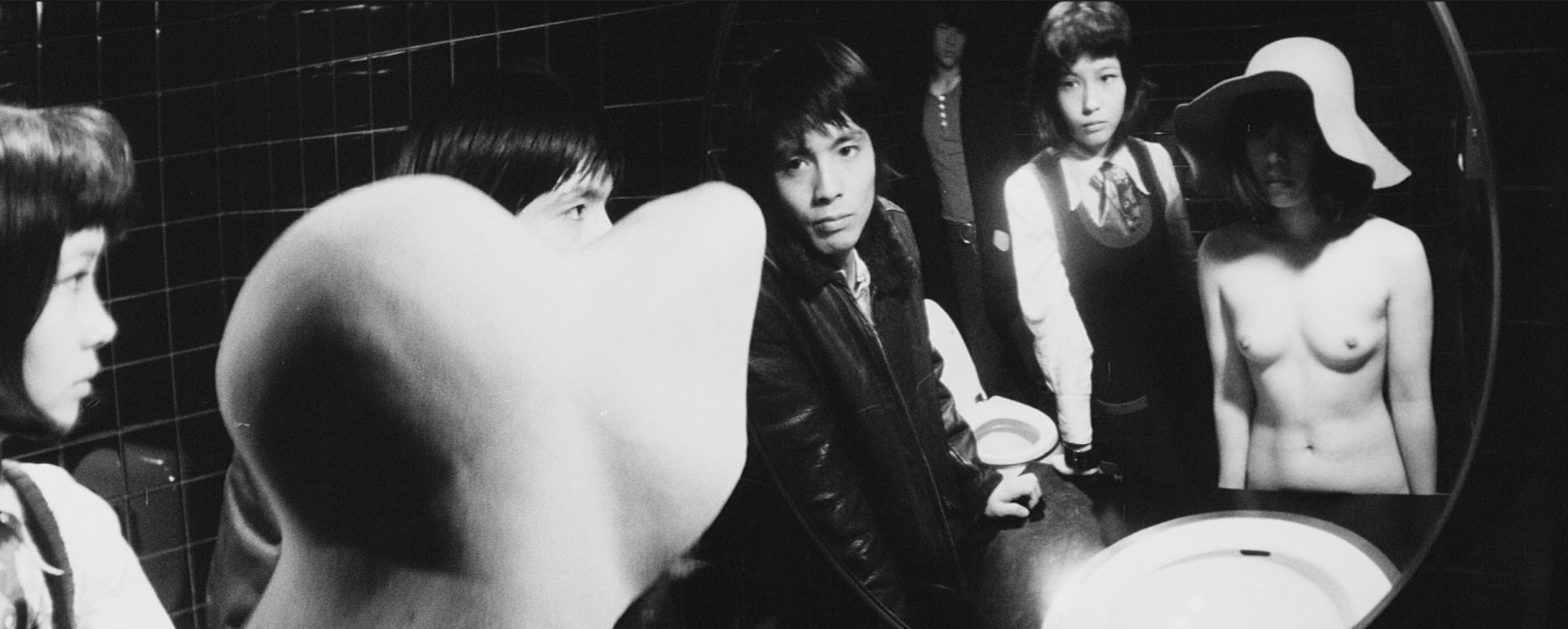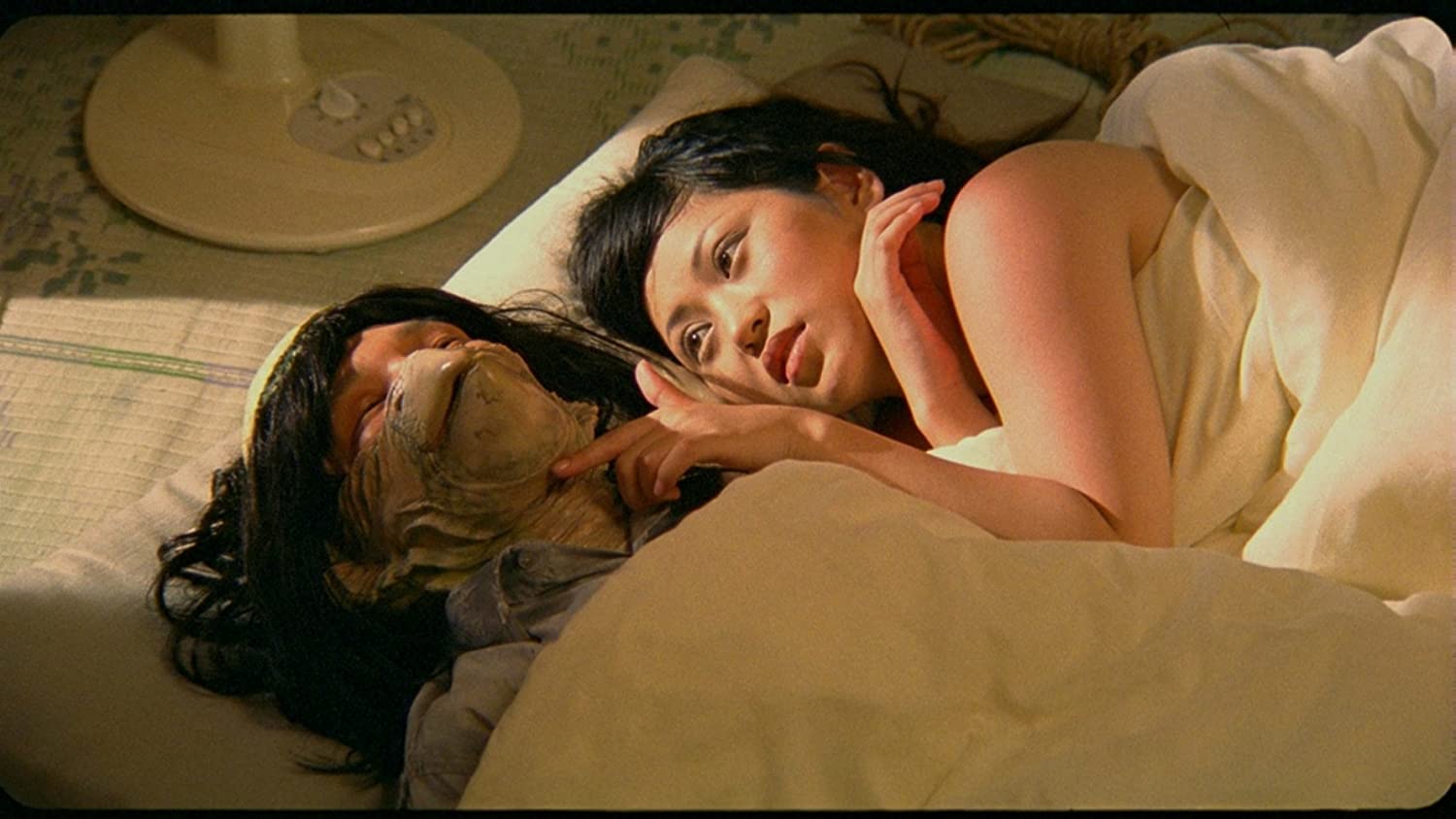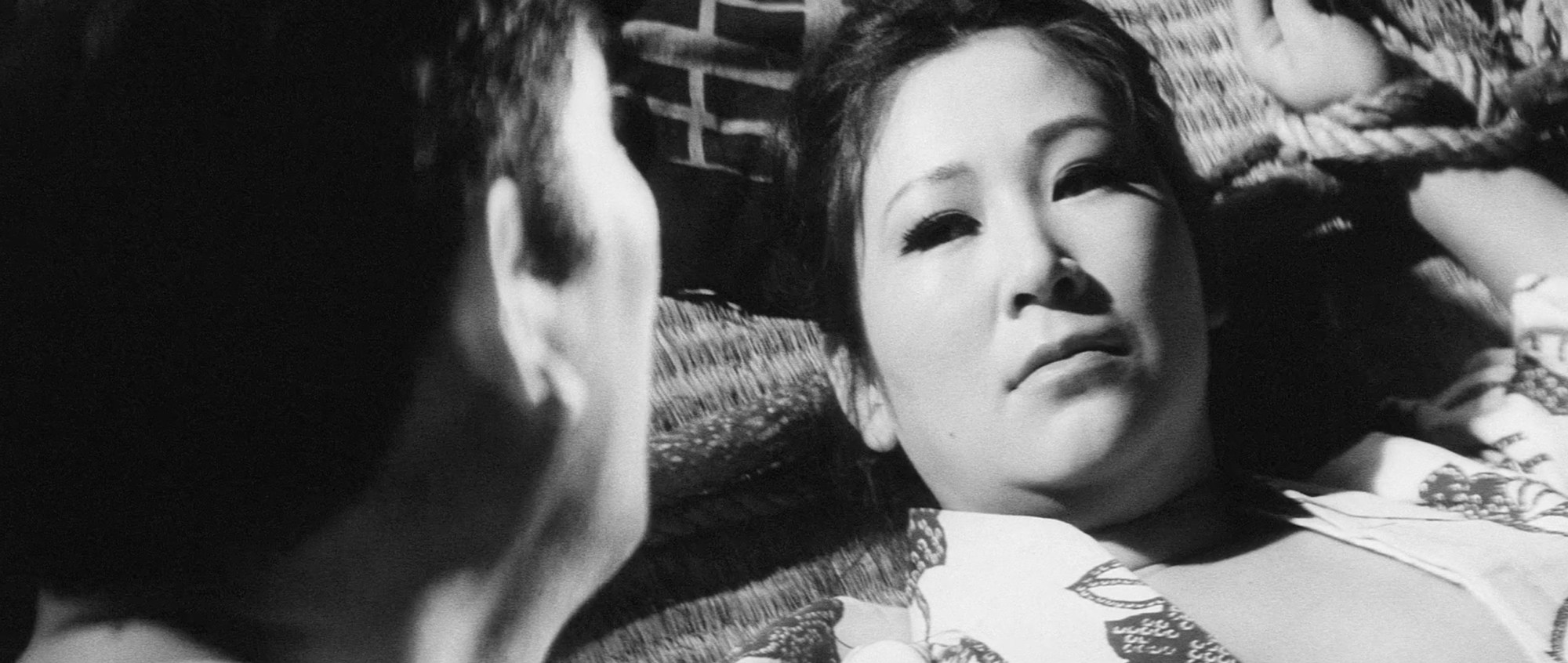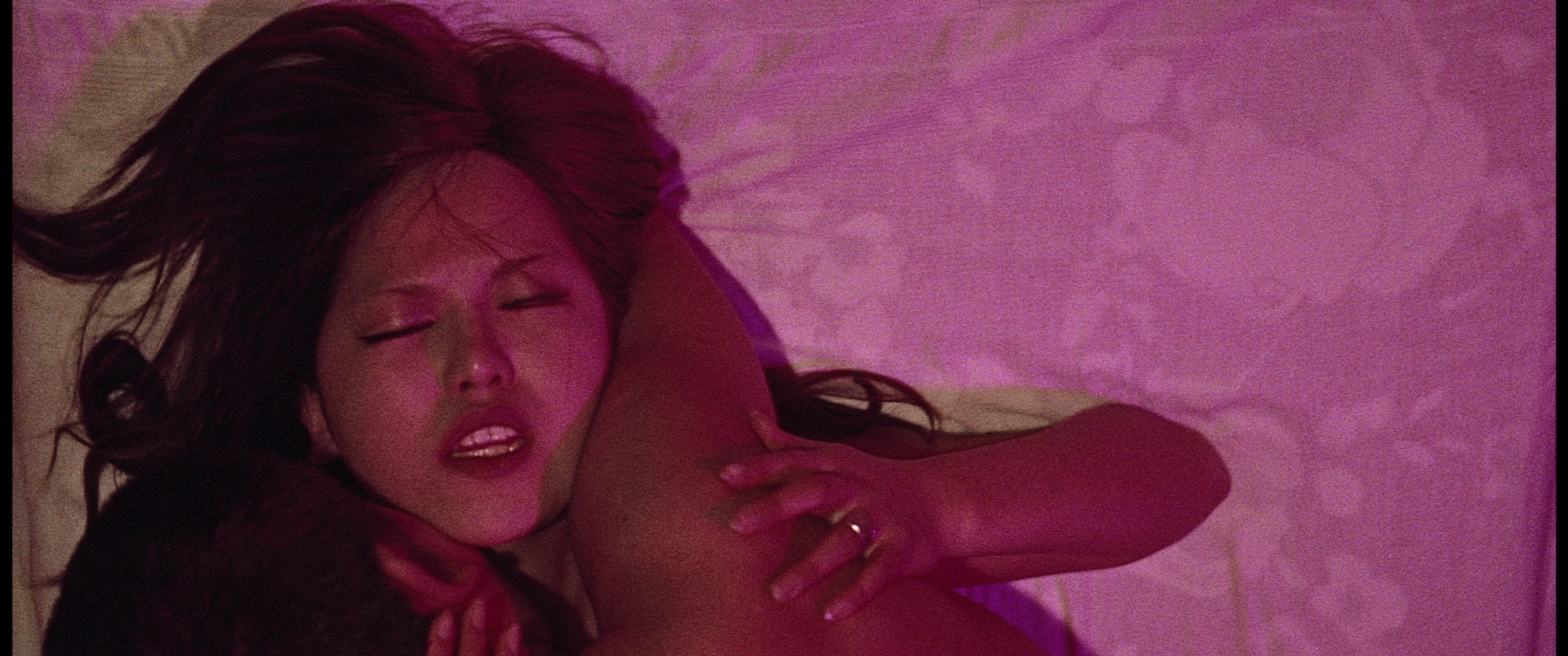“There are some very boring films that exist,” laughs Stephan Holl, Managing Director of German distribution label Rapid Eye Movies. As a restorer of overlooked Asian films, he has years of experience watching screeners with no subtitles and low image quality. But the diamonds in the rough are worth the effort, and his latest plunder is quite something — a series of “treasures” from a unique filmmaking movement with no clear equivalent in the West. Introducing: the scandalous softcore ‘pink films’ that transformed Japanese cinema in the 1960s and 70s.
For the most part, Stephan says, these works were never intended to be kept past their brief initial cinematic run — like early silent films, they were regarded as disposable entertainment rather than artefacts of any real cultural value. Now, the whole world can behold them as they arrive on MUBI for the first time this March. The series being shared on the streaming platform, titled Keiko Sato: Pinku Maverick (named after a pioneering Kokuei Studio producer with over 500 credits to her name), gives a stage to a complex and provocative sub-genre that has spawned some of the most unique independent films in history — and launched the careers of some of the country’s most renowned directors. It consists entirely of Japanese sex films.
The 60s, explains Stephan, was the genesis of the pinku eiga, or “pink film”. With the advent of television causing Japanese box office admissions to crash from over a billion in 1958 to just 300 million a decade later, empty movie theatres across the country needed something different to entice people back. What they got was something sensual, something scandalous; a brand of low-budget filmmaking mixing softcore thrills with the zeal of mainstream cinema.

It was not pornography. A long-enforced ban on the display of genitals and pubic hair made sure of that (indeed, producer Keiko Sato’s career began after her friend’s father was arrested for distributing films that defied the censors). Instead, with breasts and bare skin a major draw, salacious sexual encounters would be linked together by real narrative filmmaking.
These were not just films about postmen making special deliveries or calling a plumber to come and fix a leak; beyond titles like Inflatable Sex Doll of the Wastelands, Ecstasy of the Angels and Women… Oh Women!, full movies incorporated violent crime, period drama, surreal fantasy and comedy. It was an explosion that hit the country via triple-bill screenings in remodelled “adult-only” theatres — and by 1970, almost half of movies produced in Japan fell into the “pink” category.
“The pink industry didn’t merely solicit filmmakers to entertain… it provided the opportunity to incorporate bold political subtext for the meagre cost of showing a bit of skin.”
“It’s a technical framework,” Stephan says, outlining the unwritten rules for pink filmmaking beyond a proclivity for provocation: shooting on 35mm film with “almost no money” and completing the whole thing in one week. “[But] within these limitations,” he declares, “there is so much freedom.” It’s a sentiment echoed by contemporary pink filmmaker Shinji Imaoka (Underwater Love, The Tender Throbbing Twilight): “As long as you can see some nudity,” he tells i-D via an interpreter, “you can do anything“.
And so, the murky underbelly of Japanese cinema would become an arena for boundless creativity. Take Inflatable Sex Doll of the Wastelands — a surreal 1967 noir set to a wild avant-jazz soundtrack, where a hard-boiled hitman haunts seedy bars populated by thugs and sex workers. Director Atsushi Yamatoya deployed elements from Seijun Suzuki’s celebrated yakuza thriller Branded To Kill for his unsung pink classic; he was a writer on both productions.

Blue Film Woman, meanwhile — one of the first pink films shot in colour — fuses elements of horror with enough groovy musical interludes to make even Austin Powers blush. And Women Hell Song feels like a forerunner to Quentin Tarantino’s Kill Bill — only with more sex — as a female outlaw commits violent sword slayings in the timber-gated villages of pre-modern Japan, to a soundtrack of spaghetti western guitars.
The pink industry didn’t merely solicit filmmakers to entertain, either; it provided the opportunity to incorporate bold political subtext for the meagre cost of showing a bit of skin and smut.
Just as the “swinging sixties” in America had projected sexual liberty as protest against the Vietnam War, so too did sex become utilised as a means of defiance in Japan. The early 70s had seen anger and protest directed against the government in response to the second extension of the Anpo Treaty (enforcing Japan’s alignment to US Cold War policies despite the country’s precarious geography to neighbouring communist territories). As a cultural document, then, Gushing Prayer says plenty.

Masao Adachi’s dark, cryptic feature tells the story of a teen sex worker unable to experience satisfaction, and is intercut with monologues that read the suicide notes of hopeless teens. Here was a “sex film” that subverted the very notion of eroticism as pleasure and instead evoked it as a powerful expression of loss. The film ends bleakly when the protagonist miscarries her pregnancy — spelling a dim future for the next generation.
The decade that ensued would see major studios in Japan adapt to steal back the pink theatres’ audiences. Nikkatsu — the oldest major studio in Japan — rebranded to exclusively produce sexploitation films in the 70s, while rivals Toei would become known for “pinky violence” films that blended titillation with action. Come the 80s, home video would transform the landscape of consumption once again, with the pink industry now beleaguered in the face of major studio assimilation and a booming straight-to-video industry.
As the major studios’ purse strings tightened during this industry-wide metamorphosis, pink film took on a new function. It became almost like a “school of filmmaking”, Stephan says — as young, eager directors sought to prove their worth before moving on up to the loftier heights of mainstream filmmaking. This era would see pink film produce some of the most visible filmmakers of contemporary Japanese cinema.

The early credits of Hideo Nakata, who directed global horror smash Ring in 1998, include films like Female Teacher’s Diary: Forbidden Sex. Masayuki Suo, whose 1984 pink film Abnormal Family features in MUBI’s pink film season, scored one of the most financially successful Asian films ever to be released in the US in 1996 with ballroom drama Shall We Dance? (remade with Richard Gere and J-Lo in 2004). Even Yōjirō Takita — who won an Oscar in 2008 for his drama Departures — had taken his first steps towards success in 1982 with the dubiously-titled pink comedy series, Molester’s Train.
Perhaps Underwater Love, a “pink musical” about a cucumber-munching swamp creature who yearns for the love of a human, represents the creative zenith of the present-day pink industry. It’s a film that fires on all cylinders in terms of genre and style, as passionate sex scenes play out against wild song-and-dance numbers. Produced by Stephan —who wanted to make the “Apocalypse Now of the pink films” — and shot by revered cinematographer Christopher Doyle (In The Mood For Love) for Kokuei Studio, the German-Japanese co-production reflects how this singular genre had built an international reputation.

The future is less optimistic, however, according to director Shinji Imaoka (who, as one of the “Seven Lucky Gods of Pink” remains a leading figure in the field). “In the olden days, sex and violence on TV or in cinema was very taboo, but these days it’s everywhere,” he says. “Pornographic films, meanwhile, are widely available and easily accessible online. In the heyday, there were so many different studios like Kokuei, each operating their own chains of adult cinemas. Now, there’s only probably about 30 [theatres] left. The whole industry is in decline — it will be dead soon.”
Despite this, with Stephan and Keiko Sato’s restored pink films having premiered at the world-renowned Berlin Film Festival in 2018, these works are now reaching a wider audience than ever before. Shinji Imaoka’s career prospects, meanwhile, like many of his pink predecessors (such as Hideo Nakata) look a little brighter. His independent and definitely-not-pink drama Reiko and the Dolphin — which explores the devastating effects of an earthquake on a married couple and their young daughter — was named one of the best films of the year upon release in 2020 by leading Japanese film criticism magazine Eiga Geijutsu. So what’s driving him to keep pushing forwards, despite the death of his favoured genre? “That free-spirit I had while I was making pink films… I’d like to continue exploring that.”

Once dismissed by veteran critic Donald Richie in 1991 as being less about “the joys of sexual union” than “the denigration of women”, pink film has since proved a considerable cultural worth off the back of its outrageous 60s industry stir-up. Whether they’re essential social documents, or in Stephan’s words, “cultural artefacts”, pink films, with their propensity for rule-breaking, excitement and rampant creativity, would transform the blueprint for what independent filmmaking could be. Nowadays, we might even observe them as forerunners for erotic breakthroughs in the 90s Hollywood like Paul Verhoeven’s Basic Instinct.
As Jasper Sharp summates in his book Behind The Pink Curtain, “what was dismissed as exploitation upon its initial release… might well be seen as art today”. And it seems that global enterprises like MUBI, the BFI (who screened Inflatable Sex Doll of the Wastelands and Gushing Prayer last year) and Third Window Films (who complete a trilogy of pink film rereleases this month in the UK) would agree with the latter. Just don’t watch them with your parents.
Follow i-D on Instagram and TikTok for more on the sexy world of film.

